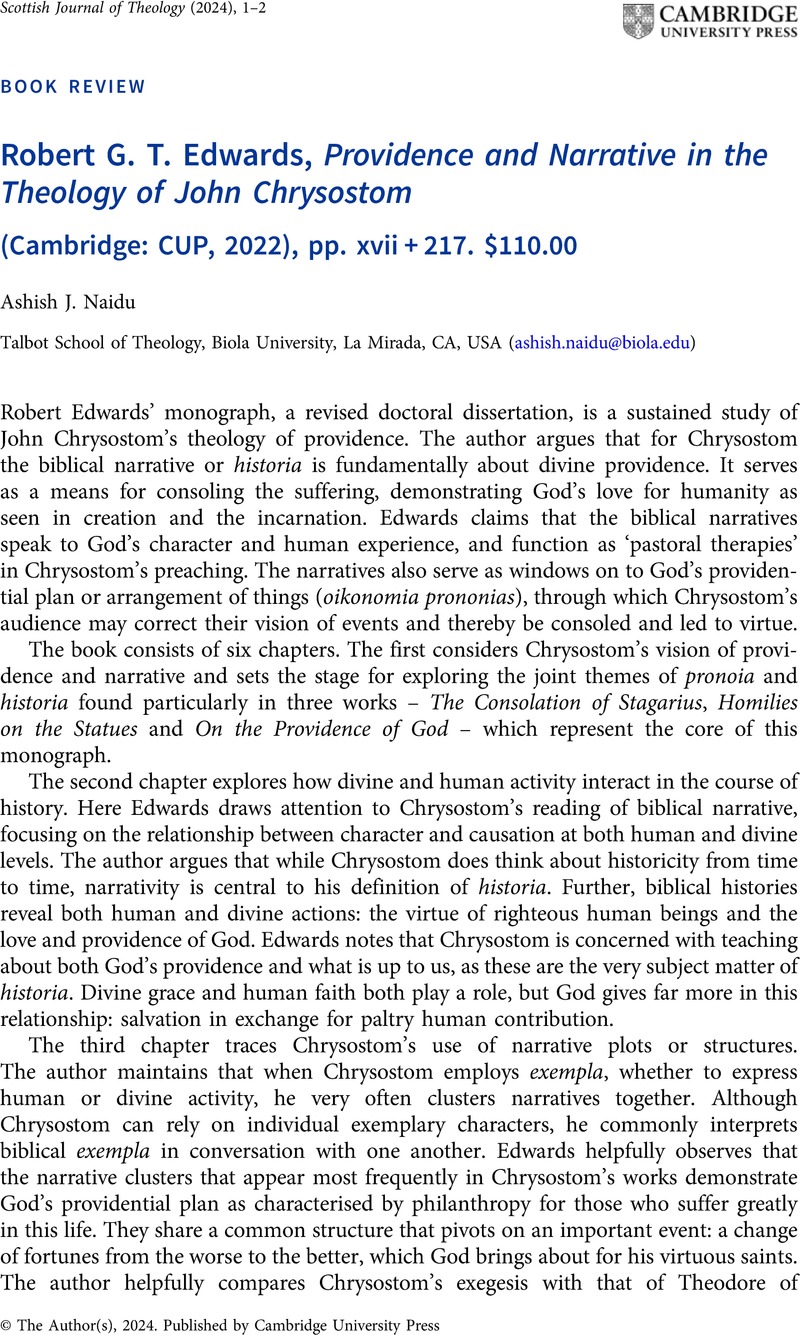No CrossRef data available.
Article contents
Robert G. T. Edwards, Providence and Narrative in the Theology of John Chrysostom (Cambridge: CUP, 2022), pp. xvii + 217. $110.00
Review products
Robert G. T. Edwards, Providence and Narrative in the Theology of John Chrysostom (Cambridge: CUP, 2022), pp. xvii + 217. $110.00
Published online by Cambridge University Press: 11 April 2024
Abstract
An abstract is not available for this content so a preview has been provided. Please use the Get access link above for information on how to access this content.

- Type
- Book Review
- Information
- Copyright
- Copyright © The Author(s), 2024. Published by Cambridge University Press



